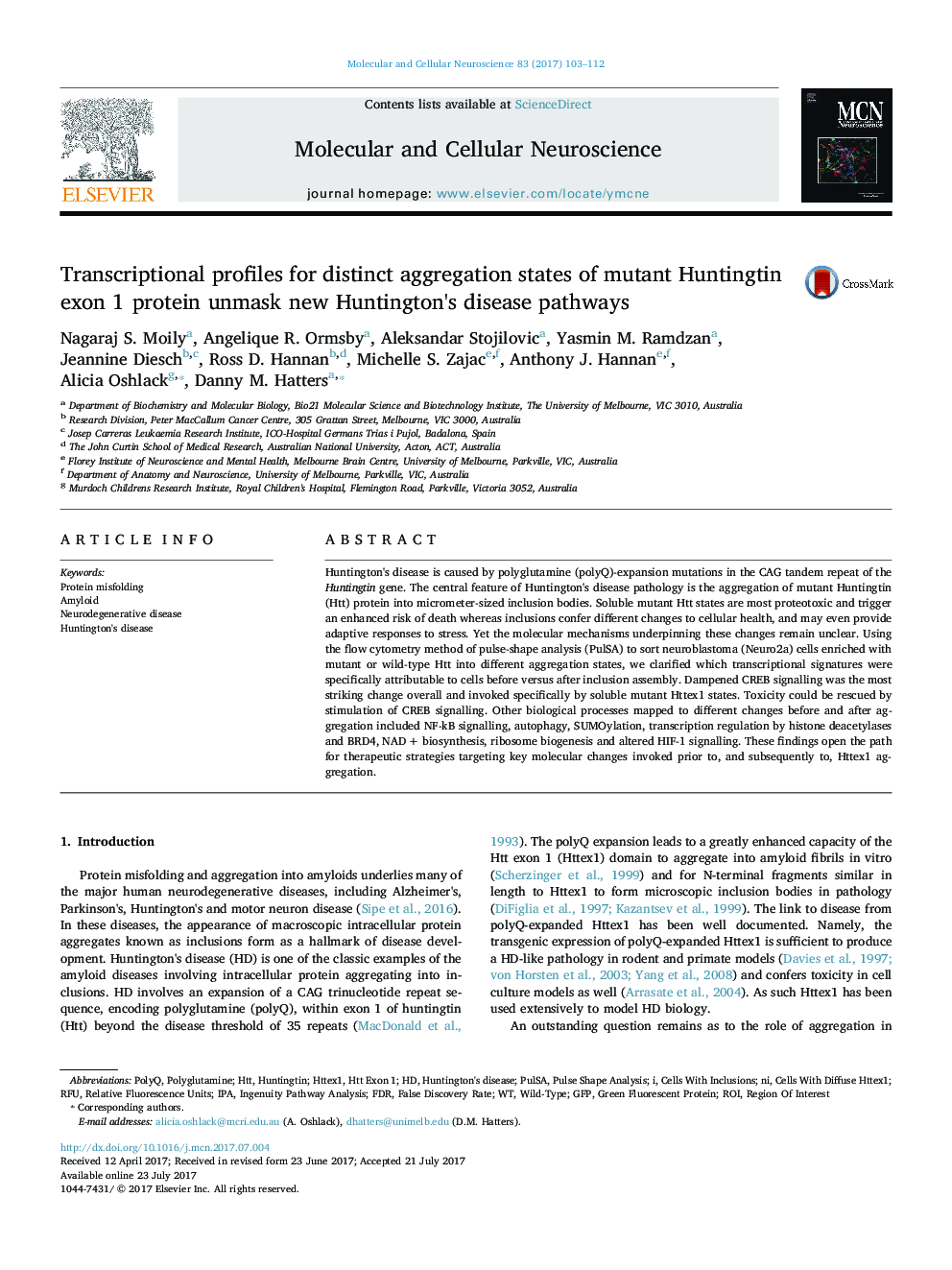| کد مقاله | کد نشریه | سال انتشار | مقاله انگلیسی | نسخه تمام متن |
|---|---|---|---|---|
| 5534409 | 1551123 | 2017 | 10 صفحه PDF | دانلود رایگان |
- Transcriptional changes due to aggregation of mutant Httex1 are described.
- The largest changes in the transcriptome are stimulated by soluble mutant Httex1.
- Inactivated CREB signalling is the most profound impact arising from soluble Httex1.
- Dampened CREB signalling explains the molecular basis of toxicity.
- Additional pathways unearthed as transcriptional signatures for Httex1 aggregation.
Huntington's disease is caused by polyglutamine (polyQ)-expansion mutations in the CAG tandem repeat of the Huntingtin gene. The central feature of Huntington's disease pathology is the aggregation of mutant Huntingtin (Htt) protein into micrometer-sized inclusion bodies. Soluble mutant Htt states are most proteotoxic and trigger an enhanced risk of death whereas inclusions confer different changes to cellular health, and may even provide adaptive responses to stress. Yet the molecular mechanisms underpinning these changes remain unclear. Using the flow cytometry method of pulse-shape analysis (PulSA) to sort neuroblastoma (Neuro2a) cells enriched with mutant or wild-type Htt into different aggregation states, we clarified which transcriptional signatures were specifically attributable to cells before versus after inclusion assembly. Dampened CREB signalling was the most striking change overall and invoked specifically by soluble mutant Httex1 states. Toxicity could be rescued by stimulation of CREB signalling. Other biological processes mapped to different changes before and after aggregation included NF-kB signalling, autophagy, SUMOylation, transcription regulation by histone deacetylases and BRD4, NADÂ + biosynthesis, ribosome biogenesis and altered HIF-1 signalling. These findings open the path for therapeutic strategies targeting key molecular changes invoked prior to, and subsequently to, Httex1 aggregation.
Journal: Molecular and Cellular Neuroscience - Volume 83, September 2017, Pages 103-112
